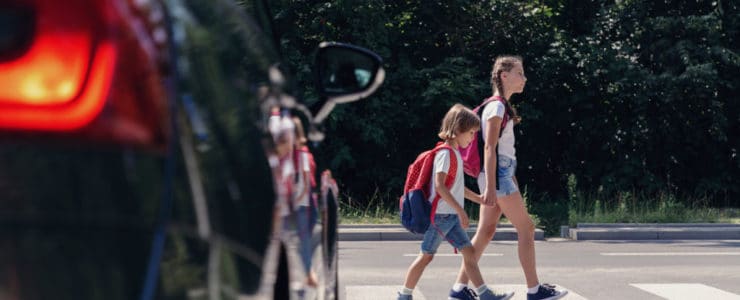
Pedestrian safety is the responsibility of both the pedestrian and the motorist and, sadly, negligence on both parts results in accidents, injuries and fatalities. Over the last few years, pedestrians in Nevada have been exposed to more and more dangerous and unsafe conditions, resulting in a steady increase in traffic injuries and fatalities. According to the National Highway Traffic Safety Administration (NHTSA), in 2019, 6,205 pedestrians died. NHTSA raises awareness of the dangers to pedestrians, providing safety tips, educational material and other resources on their website.
At some point in any given day, week, or year, everyone is a pedestrian, and unfortunately pedestrian fatalities consistently remain high. Often, pedestrian-related accidents are a result of distracted or careless driving, or carelessness of pedestrians, disregarding laws, rules and regulations of the roads. Laws are created to help mitigate the carelessness and ignorance of pedestrians and motorists when someone is walking on local roads and highways, yet both drivers and pedestrians do not always follow such guidelines appropriately.
Pedestrian Laws and Traffic Safety Tips:
- Crosswalks
- A crosswalk exists at any intersection, whether there are pavement markings or not. (NRS 484A.065)
- Drivers
- Must exercise due care to avoid a collision with a pedestrian at all times. (NRS 484B.280)
- Must yield to pedestrians in crosswalks. (NRS 484B.283)
- Must yield at all times to a blind person using a white cane or service animal. (NRS 484B.290)
- Must stop or slow down before passing another vehicle stopped in a travel lane until the driver has determined whether that vehicle has stopped for a pedestrian. (NRS 484B.283)
- Must, in the presence of a school crossing guard, wait for all persons including the guard to completely clear the road before proceeding. (NRS 484B.350)
- Pedestrians
- Must use the sidewalk and the nearest crosswalk, pedestrian bridge or tunnel when possible.
- Must obey official traffic-control devices.
- Must stay in the right-hand half of the crosswalk whenever practicable.
- Must walk on the left side of the street facing traffic if no sidewalk is available.
- Must not suddenly walk into the path of a vehicle so that it is impossible for the vehicle to yield.
- May not cross an intersection diagonally unless the intersection is specifically designed for this. (NRS 484B.283 through 484B.297)
- Children
- Children are often seen walking, riding bikes and playing outside, especially in neighborhoods and cul-de-sacs. Parents prioritize teaching basic safety rules to their kids, but children do not have the mental maturity to decipher and make traffic judgments until at least age 10.
- Children may assume that if they see the driver, the driver sees them.
- They may have difficulty in judging speed and think cars can stop quickly.
- Bushes, cars and other obstacles may prohibit children seeing streets, bling spots and speeding vehicles.
- Children are often seen walking, riding bikes and playing outside, especially in neighborhoods and cul-de-sacs. Parents prioritize teaching basic safety rules to their kids, but children do not have the mental maturity to decipher and make traffic judgments until at least age 10.
Police forces in Nevada have been working to use similar methods from larger cities to assist in mitigating pedestrian accidents from happening, cracking down on pedestrians failing to yield to traffic and jaywalking. Jaywalking in Las Vegas actually carries a heavy fine, which many do not know, but additional penalties have not positively impacted safety for pedestrians and motorists.
Pedestrians utilizing a crosswalk or obeying traffic signage at an intersection typically have the right of way. Vehicles are expected to yield as the pedestrians cross the street. (NRS 484B.287)
- Some streets lack a crosswalk and fail to provide additional signage notifying drivers and pedestrians in said area, forcing a pedestrian to cross whenever and wherever they feel they may safely do.
REMEMBER: If you’re drunk and carelessly walking where traffic is present, the situation is very similar to that of drunk or impaired driving. Your personal safety is at risk when you are negligent of the rules and regulations in place for pedestrian safety. As an intoxicated pedestrian, your ability to discern and make decisions is impaired.
Pedestrian safety is not always about the active pedestrians actions, but rather a result of pedestrian and motorist actions. Unfortunately, accidents happen. No matter how cautious you are, you can never be certain a tragedy won’t happen. Talking with a knowledgeable person who understands everything regarding Las Vegas and Nevada law is important. Share this resource with your friends and family members who could benefit knowing more about pedestrian safety.


